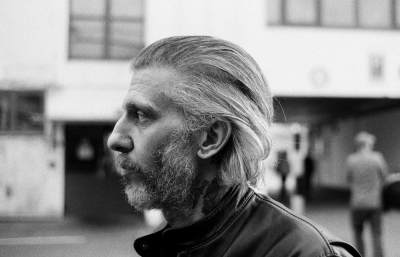Sheboygan. What a delightful word to say. It almost encourages exaggerated pronunciation, especially when spoken with the rounded consonants and dragged-out vowels of many Wisconsinites. It's a small city, hovering around 50,000 in number, and has been historically known as the “Bratwurst Capital of the World,” as well as home to the world's largest American flag. On an old postcard, it boasts “Cheese, Chairs, Churches, and Children,” but in recent years, it's also on the precipice of becoming, at the very least, a splendid place to see some fantastic art, new and old.
Visiting Sheboygan in the winter is tough, as most Wisconsinites have entered what my shuttle bus companions referred to as, without humor or hesitance, “hibernation.” And that is not to say they can't handle the cold. Wisconsin regularly dips below zero in the winter, and I imagine it probably has something to do with the fact that my fingers felt like they were going to break off after a three-block, gloveless journey with my (rather tasty) gas station coffee. This is coming from a Maine-native, given to regularly chastising Californians' tendency to whine when the temperature drops below 50. The coldest temperature recorded in Wisconsin is -55 degrees... Anyway, everywhere I went indoors was warm and the locals' temperament even warmer.
The first night there, a freelancer and I were brought to the Duke of Devon, a British pub that lies on the north shore of the town's namesake Sheboygan river. We all got burgers, which, coming from San Francisco, was notable, what with more vegans joining ranks with every passing year. Each burger boasted a different type of cheese, which is notable for much more obvious reasons. Wisconsin is as enthusiastic about cheese as the Milwaukee airport might make you believe, and it certainly made me believe, I came back with three cheese pins for the office and a plush Holstein cow… But yes, the Duke of Devon, tasty burgers, lots to look at. If you can think of a famous Briton, I bet there's a photo of them somewhere in that restaurant.
The next morning, we entered Paradigm Coffee, a café reminiscent of time spent in Western Massachusetts' Pioneer Valley, a small semi-rural region with an overwhelming number of college students and arguably too many slam poets. This was the real deal though, the rustic interior crafted almost entirely out of wooden doors. Perhaps another industry once called Sheboygan home, and maybe it still does? In addition to some truly remarkable coffee, they had all sorts of memorabilia, from hand-carved Wisconsin keychains to bottle openers crafted from old stove parts. Unlike a coffee shop one might find in Brooklyn or LA, there was no sizing up or staring down; folks seemed content to enjoy their coffee and pass off a newcomer with a greeting and a smile. If this sounds familiar, please cherish that coffee shop with your life.
Our destination was The John Michael Kohler Arts Center, a recently renovated art museum created from its namesake's prestigious art collection and patronage. Founded in 1966, the arts center serves as a creative hub for the region through community outreach and strong programming. The exterior is populated with rock and concrete sculptures that nudge the building into the surrounding landscape, and upon entering, it's a place that feels quite separate from Sheboygan.
Once visitors pass through the entrance, especially in the aforementioned Wisconsin winter, they'll naturally walk towards the coatroom. Once that's done, it's probably a good idea to stop by the bathroom, specifically to see the fabulous mosaic installations within. On each wall are painted tiles adorned with images of numerous architectural marvels, such as the Egyptian Pyramids, Chichen Itza, the Statue of Liberty, and other visual stories that chronicle humankind's predisposition to build monuments. Even the toilets sport-matching decor, perhaps not surprising given Kohler technology...
The exhibitions rotate, and for Live/Work, artists created installations that reflect the ever-changing role of an artist's studio. The ten participating artists represent a diverse cut of the art world, not just in identity, but in their practices, markets, mediums, and reputations. They hailed from all over, Pennsylvania, Illinois, Texas, New York, Oregon, even California, and each artist's interpretation of the theme was equally unique. Joel Otterson's sculpture-laden Dark Matter and Juxtapoz cover artist Trenton Doyle Hancock's giant toy shelves and humorous comic in Makeshift, approach the theme from opposite ends of the spectrum. For a viewer, though, each exhibit provided a whole new experience and perspective.
At one point, one of the hosts told me about the Sheboygan Surf Club, casually mentioning that folks had been surfing Lake Michigan for over 60 years. Lake Michigan is enormous, but I hadn't even wondered if you could surf the Great Lakes. It was a surprise that shouldn't have been one, only surprising if you don't often think outside your metropolitan bubble.
So, why not Sheboygan? I met wonderful people, went to a fantastic exhibition, saw the World's Largest American Flag, laughed over burgers, almost lost my fingers, and learned about freshwater surfing. And that was only in two days! If you're ever considering where to go to get away from it all, save the hassle and go to Sheboygan. It might surprise you, even though it probably shouldn't. Did I mention there is virtually no traffic?––Eben Benson
























